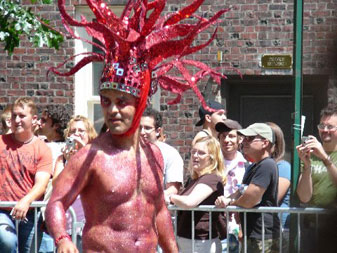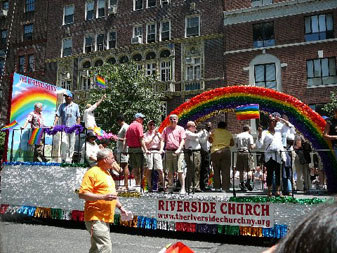The list below is something of a self-portrait in books. Most of them reflect, and in many cases helped shape, my current worldview. I recommend them for their beauty and wisdom, and the originality of their vision. They’re the books I reread while hundreds of their newer siblings languish on the shelf.
Poetry and Fiction
T.S. Eliot, Four Quartets
Elegance and coherence of Christian ideas revealed in poetry
Katie Ford, Deposition
Contemporary poet chronicles via negativa in thorny yet beautiful language
Jack Gilbert, Refusing Heaven
Poems shine with hard-won affirmation of life
Gerard Manley Hopkins, God’s Grandeur and Other Poems
Mystical joy explodes normal patterns of meter and syntax
Mark Levine, Enola Gay
20th-century poetic Apocalypse
C.S. Lewis, Perelandra trilogy (Out of the Silent Planet, Perelandra, That Hideous Strength)
Christian science fiction; CSL shares his beatific vision
Walter Wangerin Jr., The Book of the Dun Cow and The Book of Sorrows
Barnyard allegory of the gospel
Walter Wangerin Jr., The Orphean Passages
Master storyteller tells tale of minister who loses his faith and is saved by community’s love
The Arts
David Bayles and Ted Orland, Art and Fear
Overcoming perfectionism and self-doubt in order to find one’s artistic vocation
George Steiner, Real Presences
Literary critic argues that positing a transcendent God is the only guarantee of meaning in literature and art
Christian Living
Henry Cloud & John Townsend, Boundaries
Healthy relationships; Christian altruism without codependency; a life-saving book
Garret Keizer, Help: The Original Human Dilemma
Complex meditations on effectively giving and receiving help
Garret Keizer, The Enigma of Anger: Essays on a Sometimes Deadly Sin
Uniquely balanced and compassionate assessment of the righteousness of anger in the Christian life, as well as its obvious dangers
Francine du Plessix Gray, Simone Weil
Biography of quirky saint who transcended weakness and absurdity through radical obedience
Christian Spirituality and Theology
Robert Farrar Capon, The Mystery of Christ…and Why We Don’t Get It
Grace, grace and more grace
G.K. Chesterton, Heretics and Orthodoxy
Early 20th-c. Christian apologist refutes modern heresies in witty prose
Rodney Clapp, Tortured Wonders: Christian Spirituality for People, Not Angels
Best book about the Incarnation, sex, death, the Eucharist, the body of Christ in the church
Denis de Rougemont, Love in the Western World
Christian love versus Gnostic narcissism and self-annihilation; history of the myth of self-transcendence through Eros
C.S. Lewis, The Four Loves
How friendship, familial love, eros and agape are distinct yet woven together in a Christian worldview
Richard F. Lovelace, Renewal as a Way of Life: A Guidebook for Spiritual Growth
Basics of Christian belief as a foundation for church unity, spiritual revival and social transformation
N.T. Wright, The Challenge of Jesus
Jewish historical and religious context for Jesus’ messianic claims
Pluralism and Religious Truth
Stanley Fish, There’s No Such Thing as Free Speech (and It’s a Good Thing Too)
Bad-boy law professor and Milton expert debunks liberal-secularist epistemology
Lesslie Newbigin, The Gospel in a Pluralist Society
Critique of Enlightenment epistemology argues that we know things by personal commitment; faith should not be on the defensive vis-a-vis “objective” science
Cardinal Joseph Ratzinger, Truth and Tolerance: Christian Belief and World Religions
Maintaining uniqueness of Christ while humbly declining to speculate on salvation of non-Christians
James K.A. Smith, Who’s Afraid of Postmodernism?
How postmodern philosophy is more open to religious faith than the modernist- scientific paradigm that preceded it
Other Religions
Rabbi Rami M. Shapiro, Minyan: Ten Principles for Living a Life of Integrity
Jewish spirituality informed by Eastern mystical practices
Diana Winston, Wide Awake: Buddhism for the New Generation
Clear, lively introduction to meditation practice, mindfulness, compassion, and other Buddhist principles
Sharon Salzberg, Faith: Trusting Your Own Deepest Experience
Buddhist teacher’s accessible memoir chronicles the stages of conversion and spiritual growth
History of Ideas
Jennifer Michael Hecht, The Happiness Myth
How different cultures have balanced our needs for the three kinds of happiness: euphoria, daily contentment and a worthwhile life
Christopher Lasch, The True and Only Heaven: Progress and Its Critics
Acerbic history of modern utopianism and its limitations
Robin May Schott, Cognition and Eros
Marxist-feminist philosopher critiques classical and Christian mind-body dualism and projection of negative traits onto female body
And one to grow on…Ayn Rand’s The Fountainhead didn’t make the list because I disagree with more of her ideology than I did when I first read it at age 13. However, I’ll always be grateful to Rand for teaching me to think philosophically and systematically about human behavior, and for giving me the courage to trust my own vision as an artist regardless of anyone’s opinion. Those lessons have been the foundation for my entire development as a writer and a Christian…though I doubt she’d recognize me as one of her progeny. A message of humility for us writers: we can’t ever foresee all the ripples of the little pebble we drop in the pond.






